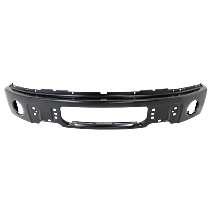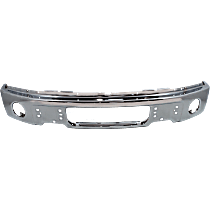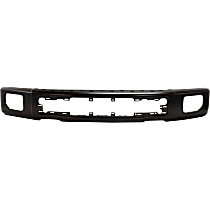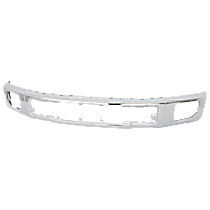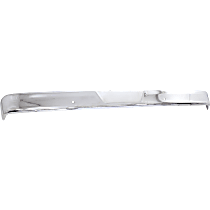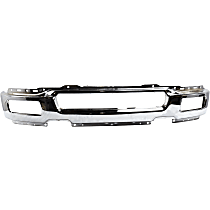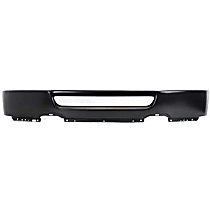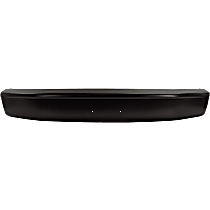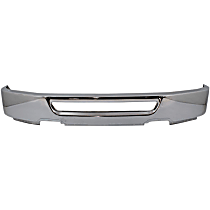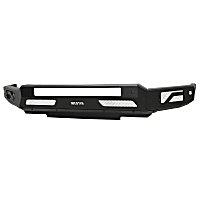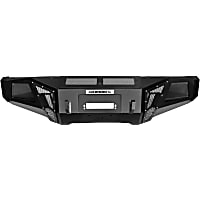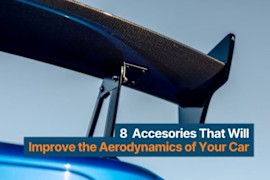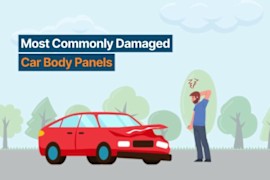{
"lazyNodes": false,
"abFitnotesFlag": false,
"abCrawlReviews": false,
"productOptionsCookie": false,
"orderDelayFlag": false,
"skipSessionCookie": false,
"covidMessage": false,
"fullTitleCookie": false,
"nrLoggerCookie": false,
"checkoutReviewCookie": false,
"productOptionSeqCookie": false,
"maintenanceFlag": false,
"bufferETACookie": false,
"multiShippingDiscountFlag": false,
"newFitmentFlag": false,
"surveyOptInFlag": false,
"crossSellFlag": false,
"skuMappingFlag": false,
"paySplitCookie": false,
"callDisableFlag": false,
"zipPaymentFlag": "u",
"hassleFreeReturn": false,
"lifetimeReplacement": false,
"cpn_off": false
}Ford F-150 Bumpers
Shop Catalog
![]() WARNING: This product can expose you to chemical which is known to the State of California to cause cancer and birth defects or other reproductive harm. For more information go to www.P65Warnings.ca.gov.
WARNING: This product can expose you to chemical which is known to the State of California to cause cancer and birth defects or other reproductive harm. For more information go to www.P65Warnings.ca.gov.
![]() WARNING: This product can expose you to chemical which is known to the State of California to cause cancer and birth defects or other reproductive harm. For more information go to www.P65Warnings.ca.gov.
WARNING: This product can expose you to chemical which is known to the State of California to cause cancer and birth defects or other reproductive harm. For more information go to www.P65Warnings.ca.gov.
![]() WARNING: This product can expose you to chemical which is known to the State of California to cause cancer and birth defects or other reproductive harm. For more information go to www.P65Warnings.ca.gov.
WARNING: This product can expose you to chemical which is known to the State of California to cause cancer and birth defects or other reproductive harm. For more information go to www.P65Warnings.ca.gov.
![]() WARNING: This product can expose you to chemical which is known to the State of California to cause cancer and birth defects or other reproductive harm. For more information go to www.P65Warnings.ca.gov.
WARNING: This product can expose you to chemical which is known to the State of California to cause cancer and birth defects or other reproductive harm. For more information go to www.P65Warnings.ca.gov.
![]() WARNING: This product can expose you to chemical which is known to the State of California to cause cancer and birth defects or other reproductive harm. For more information go to www.P65Warnings.ca.gov.
WARNING: This product can expose you to chemical which is known to the State of California to cause cancer and birth defects or other reproductive harm. For more information go to www.P65Warnings.ca.gov.
![]() WARNING: This product can expose you to chemical which is known to the State of California to cause cancer and birth defects or other reproductive harm. For more information go to www.P65Warnings.ca.gov.
WARNING: This product can expose you to chemical which is known to the State of California to cause cancer and birth defects or other reproductive harm. For more information go to www.P65Warnings.ca.gov.
![]() WARNING: This product can expose you to chemical which is known to the State of California to cause cancer and birth defects or other reproductive harm. For more information go to www.P65Warnings.ca.gov.
WARNING: This product can expose you to chemical which is known to the State of California to cause cancer and birth defects or other reproductive harm. For more information go to www.P65Warnings.ca.gov.
![]() WARNING: This product can expose you to chemical which is known to the State of California to cause cancer and birth defects or other reproductive harm. For more information go to www.P65Warnings.ca.gov.
WARNING: This product can expose you to chemical which is known to the State of California to cause cancer and birth defects or other reproductive harm. For more information go to www.P65Warnings.ca.gov.
![]() WARNING: This product can expose you to chemical which is known to the State of California to cause cancer and birth defects or other reproductive harm. For more information go to www.P65Warnings.ca.gov.
WARNING: This product can expose you to chemical which is known to the State of California to cause cancer and birth defects or other reproductive harm. For more information go to www.P65Warnings.ca.gov.
![]() WARNING: This product can expose you to chemical which is known to the State of California to cause cancer and birth defects or other reproductive harm. For more information go to www.P65Warnings.ca.gov.
WARNING: This product can expose you to chemical which is known to the State of California to cause cancer and birth defects or other reproductive harm. For more information go to www.P65Warnings.ca.gov.
![]() WARNING: This product can expose you to chemical which is known to the State of California to cause cancer and birth defects or other reproductive harm. For more information go to www.P65Warnings.ca.gov.
WARNING: This product can expose you to chemical which is known to the State of California to cause cancer and birth defects or other reproductive harm. For more information go to www.P65Warnings.ca.gov.
![]() WARNING: This product can expose you to chemical which is known to the State of California to cause cancer and birth defects or other reproductive harm. For more information go to www.P65Warnings.ca.gov.
WARNING: This product can expose you to chemical which is known to the State of California to cause cancer and birth defects or other reproductive harm. For more information go to www.P65Warnings.ca.gov.
![]() WARNING: This product can expose you to chemical which is known to the State of California to cause cancer and birth defects or other reproductive harm. For more information go to www.P65Warnings.ca.gov.
WARNING: This product can expose you to chemical which is known to the State of California to cause cancer and birth defects or other reproductive harm. For more information go to www.P65Warnings.ca.gov.
![]() WARNING: This product can expose you to chemical which is known to the State of California to cause cancer and birth defects or other reproductive harm. For more information go to www.P65Warnings.ca.gov.
WARNING: This product can expose you to chemical which is known to the State of California to cause cancer and birth defects or other reproductive harm. For more information go to www.P65Warnings.ca.gov.
![]() WARNING: This product can expose you to chemical which is known to the State of California to cause cancer and birth defects or other reproductive harm. For more information go to www.P65Warnings.ca.gov.
WARNING: This product can expose you to chemical which is known to the State of California to cause cancer and birth defects or other reproductive harm. For more information go to www.P65Warnings.ca.gov.
Top Rated Products
Popular Products
Product Questions & Answers
Customer Guides
Summary
- The bumper is a multi-part component that protects the front and the rear of a vehicle during a collision.
- It consists of a bumper cover, bumper absorber, reinforcement bar, and bumper brackets.
- There are two types of bumpers based on location: the front and the rear bumper.
- OEM replacement parts typically cost anywhere between $300 to $700.
When the Ford F-150 came out in the mid-70s, it was marketed towards drivers who were in need of a reliable workhorse. Decades later, it extended its popularity to include families and professionals alike. More than just a powerful daily driver, this pickup truck has become a symbol of style. One of the features that add to the F-150’s appeal is its set of bumpers.
What Is a Bumper?
The bumper is a multi-part component that protects the front and the rear portion of a vehicle during a collision. What we typically refer to as the “bumper” is only the exterior cover, which is part of a larger system. These parts work together to protect your lights, engine, and passenger cab from damage during a fender bender.
Parts of a Bumper
Underneath the metal panel that covers the front and rear of your vehicle are several components that make up an energy absorption system. Let’s take a closer look at each part to understand their importance in crash safety.
Bumper cover
The bumper cover is often mistaken as the bumper of a vehicle. It is typically a metal panel that matches the body of a car. Some vehicles have bumper covers that are made of hard plastic, rubber, or chrome. This external component is meant to bear the brunt of impact and crumple as a way of absorbing kinetic energy.
Bumper absorber
The bumper absorber is a thermoplastic foam that is fitted underneath the bumper cover. As its name suggests, this material is meant to slow down the crumpling of the cover, absorbing energy and minimizing the impact transferred to other parts of the vehicle.
Bumper bar
The bumper bar is the internal metal component that absorbs collision energy. It is attached to a reinforcement bar for additional support. Bumper brackets connect it to the body of the vehicle.
Bumper bracket
Bumper brackets are mounts that hold the bumper and attach it to the vehicle frame. They channel the force of impact towards crush zones in order to limit any damage to the front of a vehicle. Some mounts are meant to collapse upon impact to help in absorbing shock.
Bumper reinforcement bar
Often called the re-bar, it is a rigid metal bar that provides additional stability to the bumper bar. Its main purpose is to keep the bumper in place after it is hit by another object or vehicle.
How Does a Bumper Work?
Unlike its early iterations, modern automotive bumpers are meant to absorb collision force instead of repelling it. Parts are made of light-weight materials by design so that in low-speed collisions, these can get crushed to dissipate energy.
As the bumper cover, re-bar, and brackets collapse, the impact from the hit is significantly reduced. This means the frame and passenger cab of the vehicle absorb less force, minimizing damage and injury.
Types of Bumpers
There are two types of bumpers based on its location: the front and the rear bumper.
Front bumper
The front bumper protects safety systems like your vehicle’s headlights and other critical internal components such as the engine. The front bumper cover may also come with provisioning for lights, grilles, and other inserts.
Rear bumper
The rear bumper protects the back of your vehicle in case it is rear-ended. In trucks, this type of bumper provides easier access to the truck bed. There are five kinds of rear bumpers based on style.
Standard
A standard bumper features a plain design that only has provisioning for a vehicle’s license plate.
Step
A step bumper has a small cutout that acts as a footstep. This type of rear bumper is commonly found in vans, trucks, and SUVs. It is also known as a tow bumper because it features holes for hitch balls that allow you to tow light vehicles and trailers.
Deep drop
A deep drop bumper is similar to a step bumper because it also provides you with an additional step to access the rear of a vehicle. The only difference is that the step in a deep drop bumper is typically built 10 to 12 inches from the bottom of the frame.
Tube
Tube bumpers are rear bumpers made of cylindrical metal bars. These are typically found in off-roading vehicles.
Roll pan
The roll pan bumper is a type of rear bumper that blends seamlessly into the back of a vehicle. It rounds out the bottom of the vehicle, effectively hiding the trailer hitch.
Reasons for Replacing Your Ford F-150 Bumper
Due to its location, your bumper is expected to get chips and dents at least once during the life of your truck. It can also get banged up if you frequently load tools and heavy cargo on your vehicle. The front and rear bumpers also bear the brunt of the impact when your truck hits an object or another vehicle on the road. Replacing a missing or damaged bumper should always be a priority to ensure that your truck’s crash safety system is functioning properly.
Address collision damage
Even the smallest cracks and dents can compromise the integrity of your vehicle’s bumper. Be sure to have your bumper and its internal parts checked every time it is hit in a collision. Keep in mind that some components such as the reinforcement bar are single-use only, which means they cannot be repaired or straightened out and must be replaced after getting crushed in a road accident.
Mitigate rust and corrosion
Aside from the external bumper cover, internal metal components such as bars and brackets can also deteriorate due to rust and corrosion. It is important to switch out affected parts immediately to prevent further damage and extend the life of your truck’s bumper.
Improve form and function
Replacing your bumper is a great way to improve your vehicle’s aesthetics. You may choose to customize the look of your truck by switching bumper finishes and styles. Changing your rear bumper is also another way to add functionality to your vehicle. Adding a step or deep drop bumper provides better access to the truck bed, while provisioning for trailer hitches lets you haul more load using your vehicle.
Finding the Right Fit
There have been thirteen generations of Ford F-series trucks since they were introduced in the mid-40s. Each generation features varying part sizes. To help you find the most accurate fit for your F-150, input your truck’s year, make, and model into our website’s search engine.
How Much Does a Replacement F-150 Bumper Cost?
The cost of a replacement F-150 bumper varies depending on your truck’s year and generation. OEM replacement parts typically cost anywhere between $300 to $700. Components may be sold individually or in sets of two. While it is possible to install this part on your own, we strongly recommend going to a trusted mechanic to ensure secure and proper fitting.
Tips for Installing Your Ford F-150 Bumper Replacement
Replacing the bumper in your Ford F150 can be an exhausting and time-consuming one, especially since you need to do it perfectly. An improperly installed bumper may result in it falling off the truck when driving at high speeds or prevent the vehicle’s safety systems from functioning properly in the event of a collision.
If you are determined to replace your bumper by yourself, here are some tips on how to do it right:
Tip #1: Before you begin, make sure that you have all the screws, bolts, clips, and other fasteners for the new bumper all accounted for.
Modern bumper assemblies are designed to be as efficient as possible, so even a single missing bolt or screw will compromise the integrity of the bumper assembly.
Tip #2: Use a jack to lift the vehicle up, but use jack stands to support.
Never use jacks to support the vehicle; it is designed solely for lifting a vehicle and not to support it. Any movement from the vehicle might cause it to slip on the jack and fall off. Jack stands, on the other hand, are sturdy enough to bear the weight of the F150 and have a better gripping surface than a typical hydraulic jack. Place the jacks on designated jacking points on your pickup – you can refer to the F150’s manual where these are located – or on its suspension members or structural members.
Tip #3: Have the bumper painted first before installing it onto your pickup.
It is easier to paint it while it is off the vehicle than it is to paint it after it has been installed. You can paint the bumper yourself if you have a paint spray gun and air compressor, but otherwise have the bumper painted in an auto body shop.
Tip #4: If the bumper being replaced has built-in lights, they need to be disconnected first before the bumper is removed.
These lights typically have electrical connectors with a locking tab and rubber seals, so removing them is as easy as popping the tab loose with a flat screwdriver.
